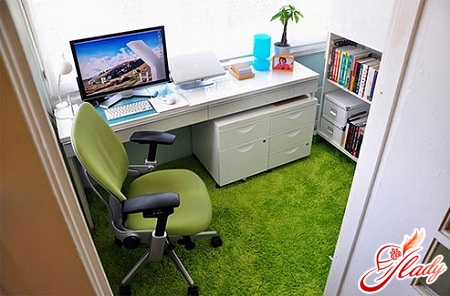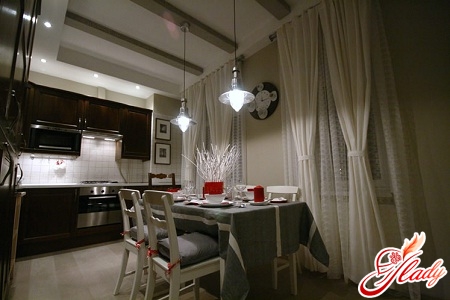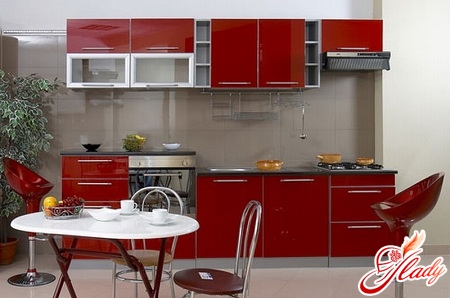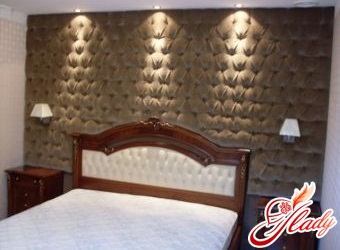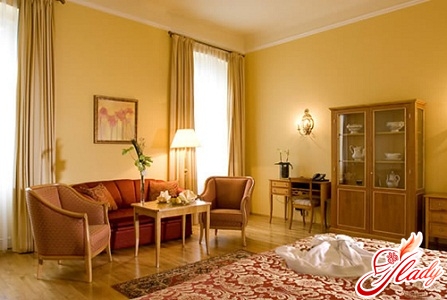 We all come from childhood. Of course, one can argue about the indelible imprint of the child's reality on his entire future life. After all, the extravagant women of the sixties of last century are girls of the post-war generation who grew up in the conditions of devastation and half-starved life, and many writers, musicians, artists and artists spent their childhood in communal apartments and barracks devoid of refinement and aesthetics. However, today's parents are not only trying to equip their children with a separate area of life, personal, so to speak, living space, but they also try to decorate the space according to all the rules. And what are these rules? What should be guided in the design of children's interior? What do professionals say about this? Let's find out.
We all come from childhood. Of course, one can argue about the indelible imprint of the child's reality on his entire future life. After all, the extravagant women of the sixties of last century are girls of the post-war generation who grew up in the conditions of devastation and half-starved life, and many writers, musicians, artists and artists spent their childhood in communal apartments and barracks devoid of refinement and aesthetics. However, today's parents are not only trying to equip their children with a separate area of life, personal, so to speak, living space, but they also try to decorate the space according to all the rules. And what are these rules? What should be guided in the design of children's interior? What do professionals say about this? Let's find out.
Designers' opinion
Interior designers consider the children's room to be one of the most interesting objects of their work. However, when developing the design of a room for a child, they are guided by the basic immutable principles:
- Multifunctionality
The area of the children's room must beat least three zones: a sleeping area, an occupation zone, a recreation area and entertainment. The principle of zoning is relevant both for a nursery with one inhabitant, and for a room where two or three children will coexist. Only in this case zoning should be both functional and individual.
- Individuality
Another important principle of interior design for childrenrooms - the correspondence of its situation to the nature and habits of the child (children). By the way, this principle lies in the basis of creating a cozy interior. Designers also try to take into account the sex of the child, his age and temperament. And this concerns not only the selection of furniture and the color solution of the room, but important details for the child, up to the height of the placement of door handles and wall switches.
- Multidimensional lighting
In the children's room there should be severallight sources: the main ceiling lamp, night light and light in the working (game) zone. Also important is the daylighting of the children's room. And its intensity is determined not only by the location and size of the window, but also by the shape and density of the window curtains.
- Simplicity of architecture
Strangely enough, but designers do not advise (andthemselves do not use) in the design of a children's room of complex shapes and multi-level surfaces. The only exception is the podium, popular among interior designers. This method (building a podium) allows you to visually zonate the room and improve its functionality. The latter is possible due to the use of space under the podium for storing things. 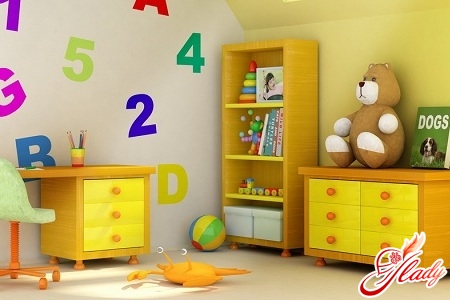
Opinion of psychologists
In many ways, the work of designers is subordinatedpsychological laws and postulates. So, for example, the principle of zoning of the room and its organization in accordance with the individual characteristics of the child fully meets the requirements of child psychology. But the vision of the color solution of the interior for designers and psychologists often varies greatly. Therefore, when designing the interior of the nursery, consider, first of all, the psychology of color.
- Red color excites, raises blood pressure, promotes occurrence of headaches and restless sleep Very undesirable color for a children's room.
- Blue Color Relieves muscle tension, reducessensitivity to pain. However, the presence of blue in the children's room is acceptable only in small quantities. This color should not be dominant. It is best to use it to design a sleeping area.
- Yellow is one of the most preferred colorsin the design of the children's room Yellow color positively affects the visual acuity and perceptual speed, activates the brain and improves mood. However, for hyperactive and excitable children this color is undesirable.
- Green Causes a sense of harmony with the outside world and has a beneficial effect on eyesight. Very good color for the design of the children's room.
- Orange Color The abundance of this color can cause overfatigue and dizziness in the child. However, his moderate and careful use more favorably affects the child's psyche.
- Pastel colors Ideal pastel colorspsychologists consider pale variants of yellow, green, pink and blue colors for the design of the children's room. Psychologists welcome lilac shades, ivory, melted milk and beige.
In addition, psychologists recommend making walls inchildren's room with colorful, and on the walls must hang children's drawings. The stimulation of the child's creative activity is also promoted by his hand-made crafts exhibited prominently. Another important advice from psychologists is not to have a children's room in the most isolated corner of the house. The child should be able to "unite" with the rest of the inhabitants of the house by simply opening the door of his room. At the same time, with the door closed, his room should create a feeling of complete security. 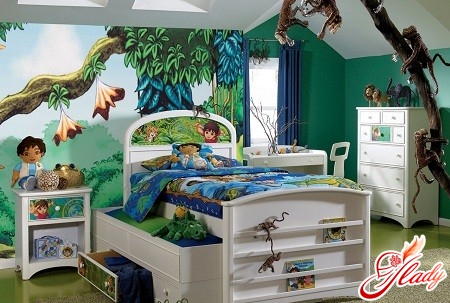
Builders' opinion
Here you think, where most freetime spends a child, staying in his room? On the couch or on the bed? But they did not guess. Children love to sit and lie right on the floor. Not to mention the fact that almost all children's games take place on the floor, children even prefer drawing here, rather than on the table. Therefore, the main finishing material in the children's room is a floor covering. Making out the interior of the room for the child, do not forget, first of all, about the environmental friendliness of the materials used for the purposes.
- Parquet is the most durable of all natural materials. In addition, it looks very beautiful and rich, easily repaired and restored, but at the same time it is not cheap.
- Parquet board is a more democratic variant of parquet, which is not less ecological and durable, but at the same time it has a lower price. Yes, and in packing this material will be simpler.
- Cork cover. This is also a natural tree. Of its merits, professionals note a high heat and noise insulation, and of the drawbacks - the ability to store static electricity.
- Laminate. A very popular floor covering today due to its excellent quality and relatively low price. Shockproof, but does not respond well to high humidity. In terms of environmental friendliness, laminate is a suitable material for a children's room.
- Sisal and wool. From the ecological point of view, this coating is beyond competition, as it is made from natural vegetable fiber and very pleasant to the touch. However, it needs daily vacuuming and also does not respond very well to moisture.
- Carpeting. Carpet with natural materials is quite suitable for a children's room, but only if it has soft pile. The main advantage of this material is the variety of possibilities of color solution, as well as the floor design with a coating with ornament or with a pattern. The disadvantage is the ability to accumulate dirt and dust.
- Linoleum. Many designers categorically reject this quite democratic floor covering. Like, and the synthetic nature of the material, and it does not fit in the fashion trends of interior design. However, modern linoleum manufacturers offer very high quality and safe varieties of this coating. So do not ignore linoleum as a possible material for the children's room.
And do not forget that in addition to flooringthe material for wall finishing in the children's room, too, must be environmentally friendly and safe. Try not to use plastic or other synthetic finishing materials. And when choosing natural coverings, give up the stone - in the children's room he does not belong. And, of course, any textiles in the room for a child should also be only natural. In the end, the health of your child is much more important than any design concept. So be guided not only by fashion trends in interior design. To design a children's interior, be guided not by fashion, but by expediency. The child in his own room should be, first of all, comfortable. And your task is to make the room comfortable, safe and beautiful at the same time. Successful beginnings! We advise you to read:





